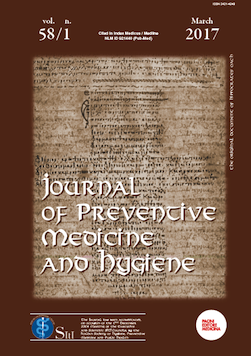Abstract
Background:
Antibiotic resistance and decreased susceptibility to disinfectants is no associated in divers microorganisms, but we have find an exception a this rule: P. aeruginosa vs orthophthalaldehyde (OPA).
Material:
Bactericidal effect of OPA at 10 minutes upon endodoncy files contaminated with an ATCC strain (control) and 206 strains of P. aeruginosa recently isolated from 206 ICU and paraplegic patients, of a tertiary university hospital, in two years.
Results and Discussion:
Differences in bactericidal effect of OPA were found between the strains isolated in each period (decreased susceptibility in the first year), but in each year the statistical differences (p<0.05) were maintained according to whether the strains were susceptible to antibiotics, resistant (one family of antibiotics) or multi‑resistant (more than one family). By contrast, there were no differences depending on the type of sample (as sputum, urine, feces, pharynx) or the type of ICU (as adults, newborns, burn patients). OPA against the 15 strains with an effect of less than 3.5 log in 10 minutes, showed a total bactericidal effect in 15 minutes.
In conclusion, an association exists between antibiotic resistance and decreased susceptibility to OPA. Normally, does not imply an increase in disinfection time, but it must be considered in endoscope disinfection.
References
REFERENCES
Herruzo I, Herruzo R, Vizcaino MJ. It’s possible to predict a decreased bactericidal effect of biocides, through antibiotic resistance in ICU: Study using a large sample of bacteria and multivariate analysis. Adv Infect Dis 2015; 5: 73-80.
Herruzo R, Vizcaino MJ, Herruzo I. Can the antibiotic resistance of a microorganism predict decreased bactericidal efficacy of disinfectants? Application to OPA and other products. EJCMID 2009; 28:539-541.
Russell AD. Do biocides select for antibiotic resistance? J. Pharm Pharmacol 2000; 92: 227-233.
Higgins C, Murtough SM, Williamson E et al. Resistance to antibiotics and biocides among non-fermenting Gram-negative bacteria. Clin Microbiol Infect 2001; 6: 308-315.
Albrich WC, Angstwurm M, Barder L et al. Drug resistance in intensive care units. Infection. 1999; 27 (Suppl): 19 S- 23 S.
Roberts SA, Findlay R, Lang SD. Investigation of an outbreak of multidrug resistant Acinetobacter baumanii in an intensive care burns unit. J Hosp Infect 2001; 48: 228-232.
Russell AD, Furr JR, Susceptibility of porin and lipopolysacharide deficient strains of Escherichia coli to some antiseptics and disinfectants. J Hosp Infect 1986; 8: 47-56.
Cremieux A, Freney J, Davin-Regli A. Methods fo testing disinfectants. Cap 68 in: Block SS Ed. Fifth ed. Lippincott Williams and Wilkins. 2000. Disinfection, Sterilization and Preservation.Philadelphia. pag: 1305-1327.
Herruzo-Cabrera R, Vizcaino-Alcaide MJ, Fernández-Aceñero MJ. Influence of laboratory adaptation of test strains (example P. aeruginosa ) in the evaluation of the antimicrobial efficacy of Orthophthalaldehyde (OPA). J Hosp Infect 2004; 57: 217-222.
Poole K, Krebes K, McNally C et al. Multiple antibiotic resistance in Pseudomonas aeruginosa: evidence for involvement of an efflux operon. J Bacteriol 1993; 175: 7363-7372
Alonso A, Campanario E, Martinez JL. Emergence of multidrug-resistant mutants is increased under antibiotic selective pressure in Pseudomonas aeruginosa. Microbiology-UK 1999; 145: 2857-2862.
Alekshun MN, Levy SB. The mar regulon: multiple resistance to antibiotics and other toxic chemicals. Trends Microbiol 1999; 7: 410-413.
Srinivasan A, Wolfenden LL, Song X et al. An outbreak of Pseudomonas aeruginosa infection associated with flexible bronchoscopes. N Eng J Med 2003; 348: 221-227.
Kovaleva J, Peters FTM, van der Mei HC et al. Trasmission of infectionby flexible gastrointestinal endoscopy and bronchoscopy. Clin Microbiol Rev 2013; 26: 231-254.
Harmsen M, Yang L, Pamp SJ, et al. An update on Pseudomonas aeruginosa biofilm formation, tolerance and dispersal. FEMS Immunol Med Microbiol. 2010; 59: 253-268.
Donskey CJ. Does improving surface cleaning and disinfection reduce health care-associated infections? Am J Infect Control 2013; 41: S12-S19
Herruzo-Cabrera R, Vizcaino-Alcaide MJ, Rodriguez J. Comparison of the microbicidal efficacy on germ carriers of several tertiary amine compounds with ortho-phthalaldehyde and Perasafe. J. Hosp. Infect. 2006 ; 63: 73- 78.
Carrasco JL. El metodo estadistico en la investigación medica. Ed Ciencia 3. Madrid. 1989.
Alfa M, Sitter DL. In-hospital evaluation of orthophthalaldehyde as a high level disinfectant for flexible endoscopes. J Hosp Infect 1994; 26, 15-26.
Hernandez A, Matro E, Puzo C et al. In-use evaluation of Perasafe compared with Cidex in fibreoptic bronchoscope disinfection. J. Hosp. Infect. 2003; 54, 46-51.

